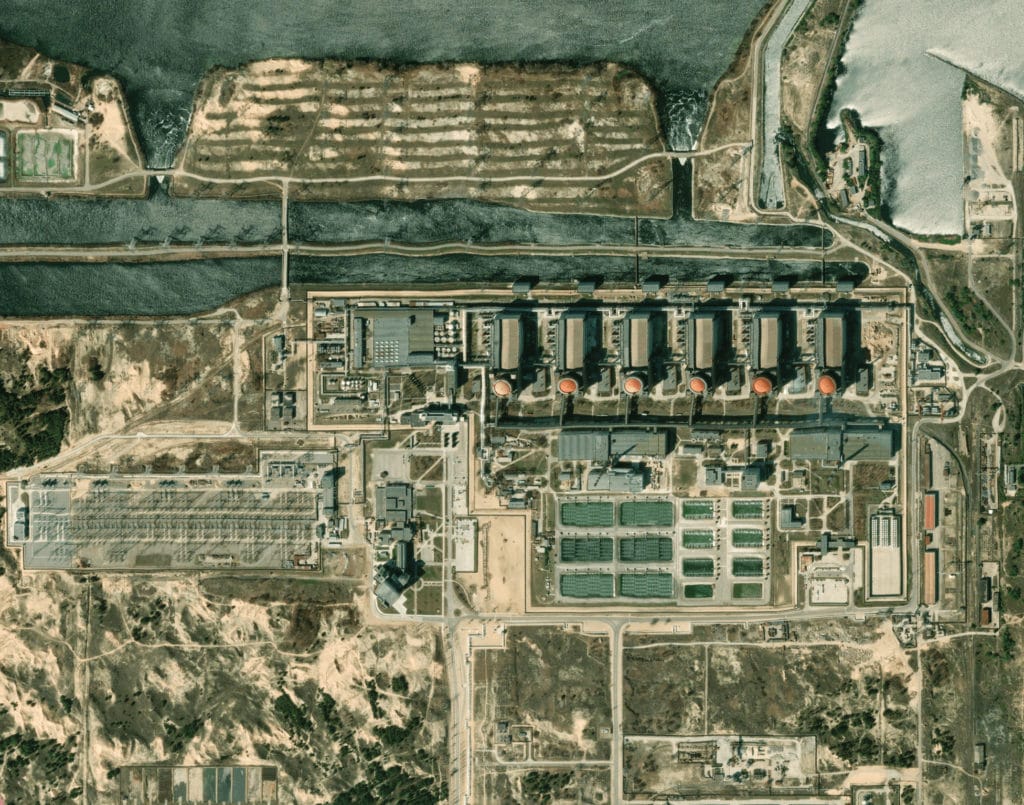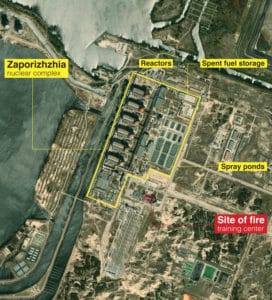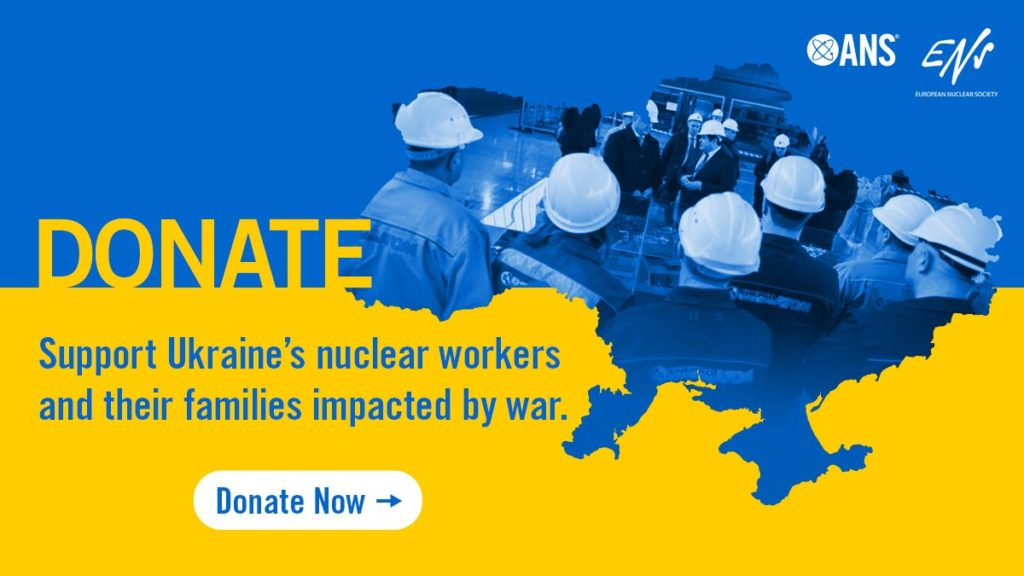How the American Nuclear Society Responded to War in Ukraine

On Feb. 24 of this year, Russia invaded Ukraine. While many Americans have followed the conflict closely, some professional groups found themselves thrust into the news cycle as the war touched their industry. That’s exactly the case for the American Nuclear Society, whose mission is to advance nuclear science and technology for the benefit of humanity.
In the past months, two events caused alarm related to nuclear technology. First, on the day of the invasion, Russian troops captured the Chernobyl nuclear site, which saw the world’s worst nuclear disaster in 1986 and still contains higher than normal background radiation levels. Then, in March, Russian forces launched an assault on the Zaporizhzhia Nuclear Power Plant. Both events triggered international nuclear concerns that called for swift action by ANS.
Association Forum sat down with ANS CEO and Executive Director Craig Piercy to speak about the group’s response and how they’ve juggled major media requests and keeping public concerns at bay.
ANS was founded in 1954 and has roughly 10,000 individual members as well as 90 organizational members. Piercy describes the membership as anyone with a nuclear engineering degree or involved in the nuclear technology industry. This includes industry workers, utilities, and nuclear suppliers, National Laboratory employees and other government employees, as well as academics working in nuclear energy.
International Ties Make for a Quick Response
“Our existing international ties and bilateral ties we have with other countries really came into play as the Ukraine invasion unfolded,” Piercy adds.
One of the keys to a quick response is existing relationships, says Piercy. “The nuclear technology community is a fairly tight knit group, and that’s true not only domestically but also internationally as well,” he says. “Our existing international ties and bilateral ties we have with other countries really came into play as the Ukraine invasion unfolded,” he adds.
ANS has agreements with other nuclear societies in roughly 30 countries. Many of these agreements are memorandums of understanding, which Piercy says “are only as good as the effort that’s put into maintaining the relationship.” Luckily, ANS had been maintaining relationships and was able to quickly work with its European counterparts when the invasion began.
Deploying a Rapid Response Team
Piercy and his team had a rapid response team in place before Russia invaded Ukraine. More than a year ago, they assembled a team and did some tabletop exercises to practice a response in the first 60 minutes of an event. The team consisted of staff, society leadership, and experts in various nuclear-related fields and with direct experience in Ukraine.
“We had 20 experts communicating on Microsoft Teams,” says Piercy. Some of these experts had experience with the kind of reactor at Zaporizhzhia, and some actually worked at the plant. Piercy added that they also tapped experts in reactor physics and the health effects of radiation exposure.
Andrew Coffman Smith, ANS director of communications, says that they initially sent information to their media list, but soon got requests from publications like the Guardian and The New York Times. During the attack of Zaporizhzhia, ANS reached out to The Wall Street Journal to clarify some points they’d published. After that, Smith says, the publication updated the story and continued to reach out for future stories.
Presenting the Facts

“We already knew where the radiation monitoring data was online and we were able to follow the security camera you saw on CNN that night for hours before the invasion,” said Piercy. The team gathered that night in the office and watched the conflict unfold.
First, there was a fire. “The fire turned out to be in a training facility that was on the grounds of the nuclear plant, but not at all related to the nuclear plant,” said Piercy. He went on to say that some early reporting talked of a fire in a nuclear plant, and ANS was quick to help correct that record. Between maps, experts who had experience at the plant, and some communication with people on the ground, ANS worked through the night to stitch the facts together.
“I think we were really able to correct for the record what happened and what didn’t happen in that area. And there were a lot of lessons to be learned that we’ll employ the next time around. But we do believe we had an impact and that our role as a professional and scientific society is to make sure accurate information is getting out there,” said Piercy. “We may not have been the loudest voice, but I think people began to realize that we had some information to offer and some credibility on that issue.”
Lessons Learned
In sum, ANS did an impressive job with their response. They gathered experts and delivered factual information to media outlets. At one point, they put out a release warning against misinformation. But, there were still things to be learned from the experience.
Piercy said that they plan to media train more of their scientist members so that they can go on camera. While they’ve done some of this, he plans to devote more resources to the effort so they have “defense in depth.”
Another area he pointed to was logistics. He said there was a lot of time spent getting people to join the Microsoft Teams platform and show them how to use the technology. It was a small bump early on, but something they’ll be ready for next time.
Smith added that the media may have learned a thing of two about nuclear reactors during these events. “This is not another Chernobyl,” he said, adding that after some communication they stopped getting alarmist requests from journalists.
ANS-ENS Ukrainian Nuclear Workers Humanitarian Fund

A truck in Ukraine is loaded with donated supplies from the ANS-ENS fundraising efforts and ready to deliver to those in need.
In addition to managing the media storm around recent events, ANS leadership wanted to help Ukrainian nuclear workers. Within 24 hours of the invasion, the ANS President Steven Nesbit called Piercy to ask about setting up the fund. Piercy said he loved the idea and they set it up immediately.
“This is where having partnerships with like-minded organizations in the region became a big plus because the challenge in Ukraine right now is getting things into the country and to the right people,” Piercy said. ANS partnered with the European Nuclear Society (ENS) and funneled the funds to the Ukrainian Nuclear Society for distribution.
Piercy estimates the fund has raised $150,000 and about 2/3 of that has already been dispersed. The money was used to buy essentials like personal protective equipment, battery banks, food, clothing, medicine, and first aid supplies. Partners on the ground in Ukraine have sent frequent updates by texting photos of the supplies in trucks ready to traverse the war zone.
The fund remains open for donations and Piercy says they will keep it open as long as there’s an identifiable need. If you’d like to donate to the fund and directly help nuclear workers in Ukraine, please do so here.
Do you have a story of national or international events directly coinciding with your association’s work? We’d love to hear about it. Contact me at Kelly@AssociationForum.org.
Tags
Related Articles
Ramping up Productivity in Busy and Distracting Times
5 tips to help you take control of your schedule and get the most out...
How Hybrid Work Continues to Shape the Workplace
Association leaders discuss the post-pandemic workplace and how hybrid work works.
The Cycle of a Successful Work-life Balance
How are association leaders promoting balance in their teams? And what can you do about...





